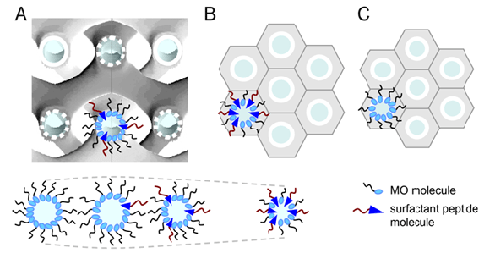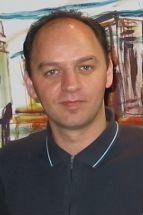Designing New Drug Nanocarriers
18 Jun, 2007 03:43 pm
The formulation of safe and efficient controlled drug delivery is an extremely important research topic. In particular, it is an ambitious goal for many research groups to enhance the encapsulation of poorly water-soluble anticancer and antifungal drugs. The motivation to carry out such investigations on the formulation of new powerful and safe drug delivery systems is stimulated by the urgent needs for curing serious life-threatening diseases without side-effects and thus saving life of many patients.
In a recent study entitled “Tuning Curvature and Stability of Monoolein Bilayers by Designer Lipid-Like Peptide Surfactants”* the researchers Anan Yaghmur, Michael Rappolt and Peter Laggner from the Institute of Biophysics and Nanosystems Research (IBN), Austrian Academy of Sciences and Shuguang Zhang from the Centre for Biomedical Engineering, Massachusetts Institute of Technology, Cambridge (USA) provide you a glimpse about the designer lipid-like peptide interactions, which could be important for improving the efficiency of lipidic nanocarriers in various pharmaceutical applications. These peptides represent a new class of man-made materials produced by using common amino acids, the same basic molecules as found for instance in meat, beans or fruits. As shown in Figure 1 (parts A-C), the investigated lipid nanostructures can be considered as complex nanosponges built up by thousands and thousands of interconnected nanotubes (one nanometer equals one-billionth of a meter). Now, by inserting man-made designer peptides they demonstrate that is possible to control the pore size, the porosity, and also to manipulate the surface charge density within such nanosponges. This in turn provides new opportunities such as the encapsulation of various types of drugs.
The lipid-like peptides are designer molecules composed of both water-loving and water-hating parts (Figure 1, parts D & E). They are attractive for solubilizing membrane proteins and enzymes, and as now summarized schematically in Figure 2, can be utilized to optimize the properties of the lipidic nanocarriers. Dr. Anan Yaghmur, first author of the study, states on the study “already the addition of small amounts of designer lipid-like peptides is sufficient to form systems with excellent potential for various biotechnological applications such as the encapsulation of water-insoluble drugs and the delivery of biological active materials.” Shuguang Zhang of MIT, a co-author adds, “this is a systematic study to combine peptides with lipid molecules. People have been curious about if these similar molecules can interact. This study provided the first answer.” “Since these lipid-like peptides can be designed, just like to design an elegant watch, an art object, a music instrument, a ski, or a pair of sunglasses, we have the ultimate control to the outcome of the structure and their properties”, Zhang further comments.
This study stemmed from a scientific visit by Peter Laggner to Shuguang Zhang at MIT in Cambridge, USA in May 2006. They shared some ideas and decided to collaborate since Laggner is a world-expert on nanostructure using small angle X-ray scattering and Zhang can provide the designer lipid-like peptides that he has been studied since 2000.
In the near future many diluted lipid formulations, that are similar as like milk and some paints, with confined inner nanostructures, will offer unique characteristics such as high drug load capacities. Here these designer lipid-like peptides may play a key role in improving effective drug delivery systems. They will continue the productive collaboration and to explore other
designer lipid-like peptides for many diverse applications.
Reference:
Yaghmur, Anan. online open access journal PLoS ONE. 30 May, DOI number 10.1371/journal.pone. 0000479.

Figure 1. The bicontinuous gyroid (A), diamond (B) and primitive (C) cubic phases are shown. The bilayer mid-planes are displayed in blue and the corresponding skeletal graphs are presented on top. In parts (D) and (E), the proposed molecular models of peptide surfactant nanostructures in water are illustrated: a peptide nanotube, and a peptide nanovesicle are presented, respectively. Color code: green for the hydrophobic tails; and blue for the charged headgroups.

Figure 2. A schematic description of the influence of loading short designer peptide surfactants (cationic and anionic molecules) onto the fully hydrated Pn3m phase. (A) At low peptide content the Pn3m phase with its two interwoven water networks (marked by full and dashed circles) is preserved, (B) at high peptide content the H2 phase is induced and (C) for comparison the H2 phase is also depicted for the unloaded MO/water system.
1 comment(s)
[1]
Comment by Prof Ehud Gazit
17 Jun, 2007 03:38 pm
Review status: ACCEPTED
 Alert Moderator
Alert Moderator







 Read more
Read more